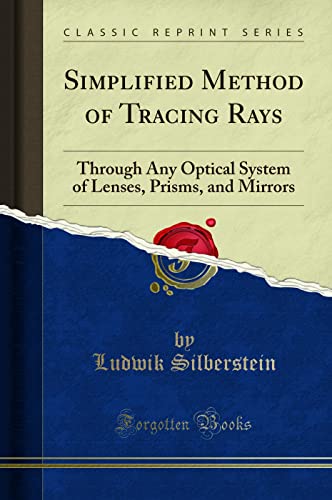Synopsis
Excerpt from Simplified Method of Tracing Rays: Through Any Optical System of Lenses, Prisms, and Mirrors
The aim of the present volume is to set forth a method of treating the geometrical optics of any given system intrinsically that is to say, without introducing any artificial scaffolding and, therefore, without any arbitrary splitting of the entities involved in the problem of tracing a luminous ray through the several surfaces of a system. The resultant formulae, in vector language, of course, as the only appropriate means of intrinsic expression, will then be free of any unnecessary elements, and therefore, if finally translated into any set of scalar formulae for the practical use of the numerical computer, will contain no superfluous, geometrical or arithmetical, complications.
Our purpose is not to treat the whole subject of geometrical optics, but exclusively, or almost so, that part of it which is called by the short name of "ray tracing." This is notoriously the most laborious part of the computers patient work, and becomes, without question, a formidable task when he has to deal with skew rays and non-centred systems. The problem thus limited can be put shortly: - Given the ray incident upon any system of lenses, mirrors, and prisms, find the emergent ray.
The advantages of the vectorial method of resolving it must not be judged by the conspicuous shortness of the resultant formulae alone, but also by the simplicity of their deduction, as compared with the usual method, and by the facility of recalling the formulae, or of reconstructing them if forgotten. Again, the nature of the proposed method is such as to make the help of drawings which, especially in the case of skew rays, become, in the best standard treatises, exceedingly complicated - almost superfluous. This circumstance will be particularly welcome to readers who are not endowed with strong visualising powers.
"About this title" may belong to another edition of this title.
